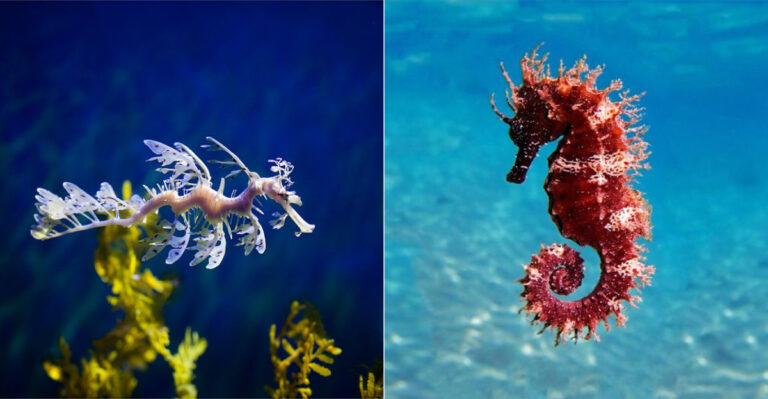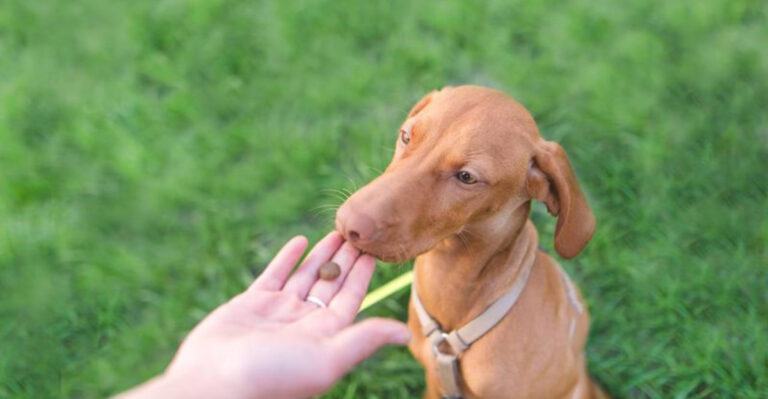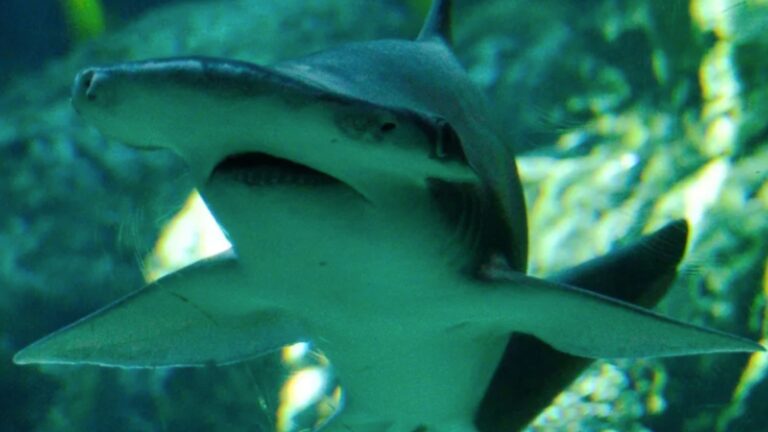What To Do If You Spot A Hummingbird On The Ground (And Common Mistakes To Avoid)
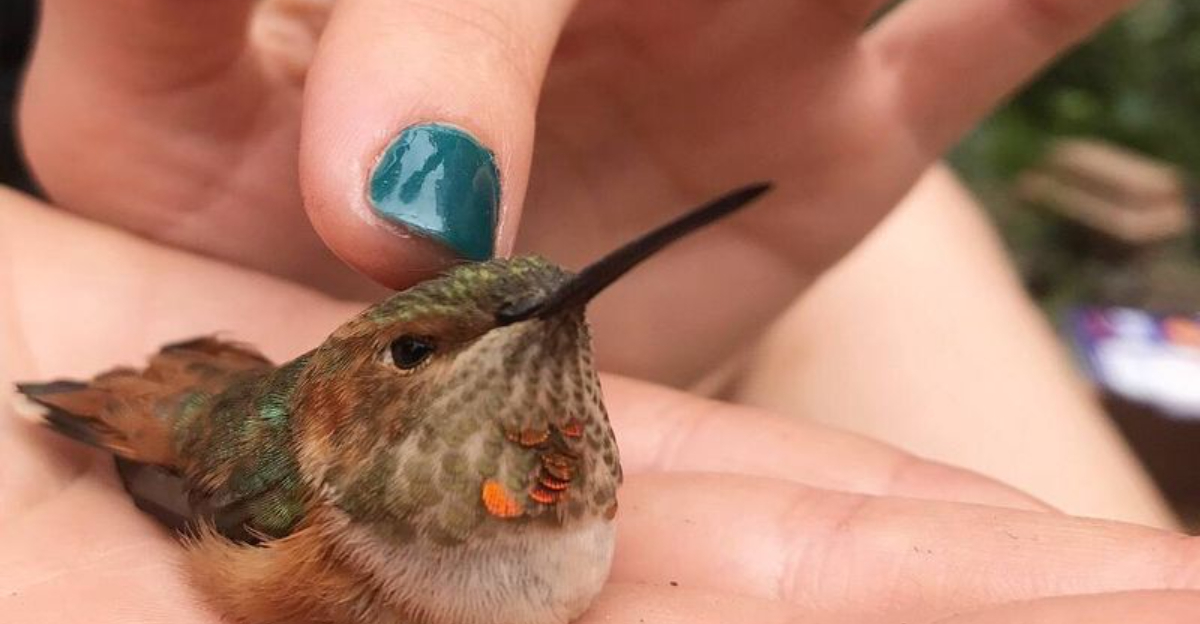
Finding a hummingbird on the ground can be both surprising and concerning. These tiny, jewel-like birds normally zip through the air with incredible speed, so seeing one grounded often signals something is wrong.
Knowing what actions to take – and which ones to avoid – could mean the difference between life and death for these delicate creatures.
Let’s explore how to help a grounded hummingbird while keeping its best interests at heart.
1. Check If The Hummingbird Is Hurt Or Just Resting
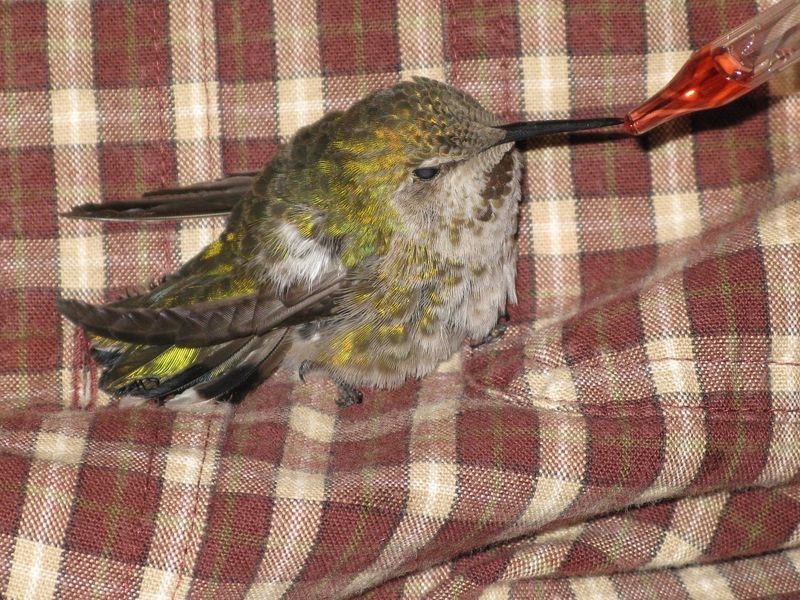
Not every grounded hummingbird is in trouble. Sometimes these tiny flyers simply need a break after exhausting their energy reserves. Look for obvious signs of injury like drooping wings, visible wounds, or unusual posture.
If the bird appears alert, is moving both wings symmetrically, and seems to be resting, give it space and time. A healthy hummingbird might just be catching its breath.
Watch from a distance for 15-20 minutes. If the bird doesn’t fly away after this rest period, it likely needs assistance. Remember that healthy hummingbirds rarely stay on the ground voluntarily – it makes them vulnerable to predators.
2. Approach A Grounded Hummingbird Safely
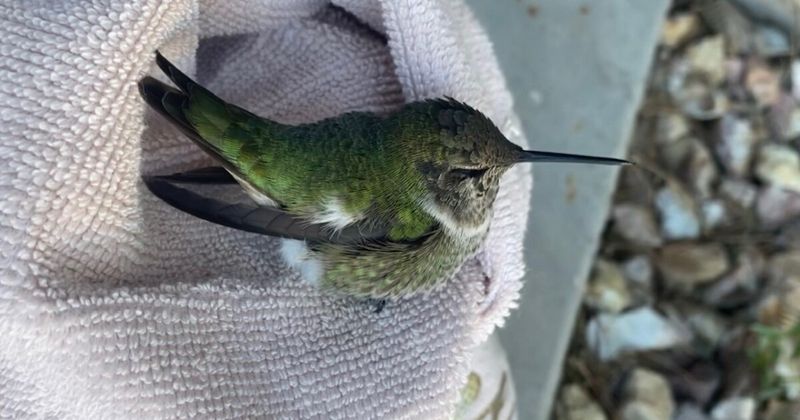
Moving slowly is your golden rule when approaching a grounded hummingbird. These birds have incredibly fast metabolisms and scare easily, which can waste their precious energy reserves.
Wear gloves if possible – not just for your protection, but to prevent oils from your skin transferring to their delicate feathers. Speaking softly or not at all helps keep the bird calm during this stressful situation.
Avoid casting shadows over the hummingbird, as this mimics a predator’s approach and can trigger panic. Gentle movements and patience create the trust needed for a successful rescue attempt.
3. Offer Water Or Sugar Water To Help The Hummingbird
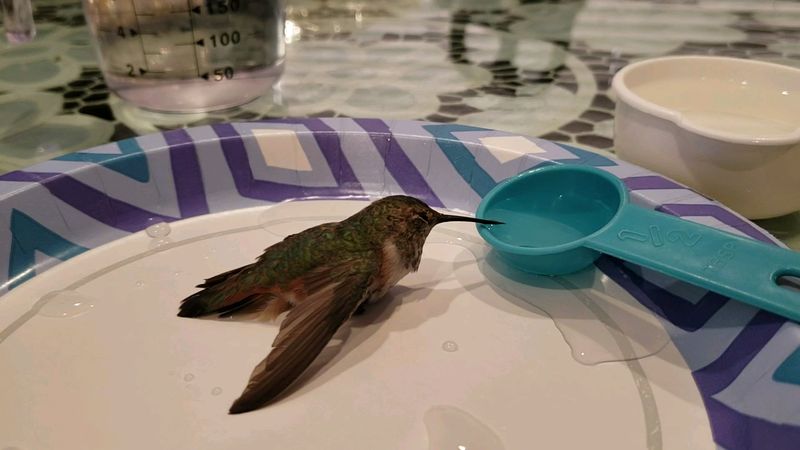
Many grounded hummingbirds are simply exhausted or dehydrated. A quick energy boost might be all they need! Mix one part white sugar with four parts water – never use honey, brown sugar, or artificial sweeteners as these can be harmful.
Offer this solution in a shallow bottle cap placed near the bird, not forced into its beak. You can also dip a toothpick in the solution and gently touch it to the tip of the bird’s bill, which might encourage drinking.
Don’t be discouraged if the hummingbird doesn’t drink immediately. Sometimes just having the energy source nearby while they rest is enough to help them recover.
4. Create A Calm Space For The Hummingbird To Recover
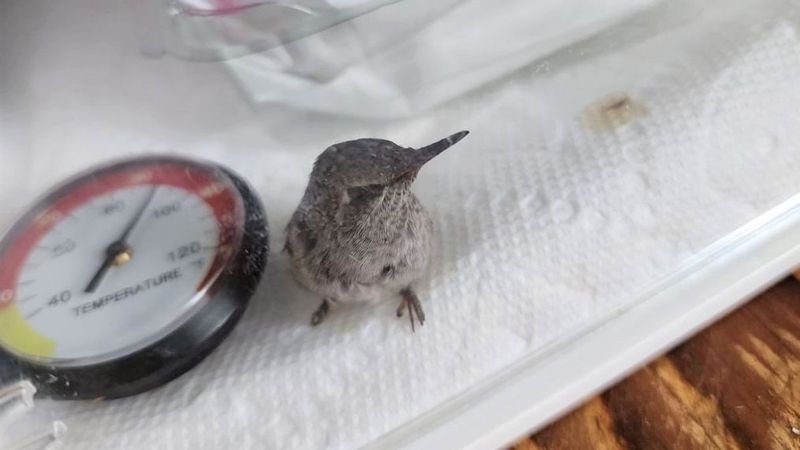
Hummingbirds need peace and quiet to recover from exhaustion or minor injuries. Find a small, clean cardboard box and line it with a soft cloth or paper towels. Cut small air holes in the sides – not the top where the bird might try to escape.
Place the box in a warm, quiet location away from children, pets, and noise. Avoid direct sunlight which could overheat the tiny patient, but don’t let it get cold either.
Darkness actually helps calm the bird, so keeping the box partially covered reduces stress. This temporary sanctuary gives the hummingbird a chance to regain strength without wasting energy on fear responses.
5. When To Call A Wildlife Rescuer For Help?
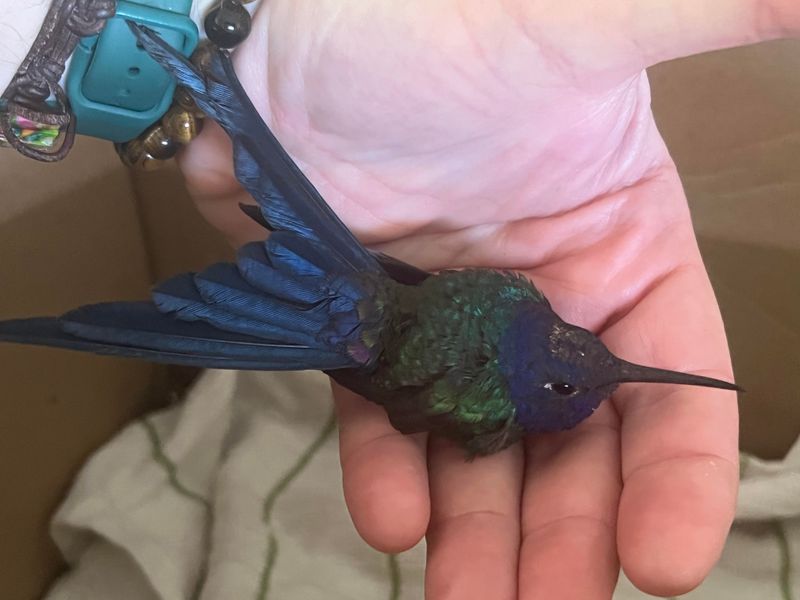
Time is critical with hummingbirds – their high metabolism means they can fade quickly. Call a wildlife rehabilitator immediately if you notice the bird has a broken wing, is bleeding, has been caught by a cat, or shows no improvement after 2-3 hours with sugar water access.
While waiting for professional help, keep the bird in a quiet, dark box to reduce stress. Many areas have specialized hummingbird rescuers who know exactly how to treat these delicate creatures.
Don’t attempt long-term care yourself – hummingbirds need specialized diets and care that most people can’t provide. Google “wildlife rehabilitator near me” or contact your local Audubon Society for expert help.
6. Move The Hummingbird Gently Without Harm
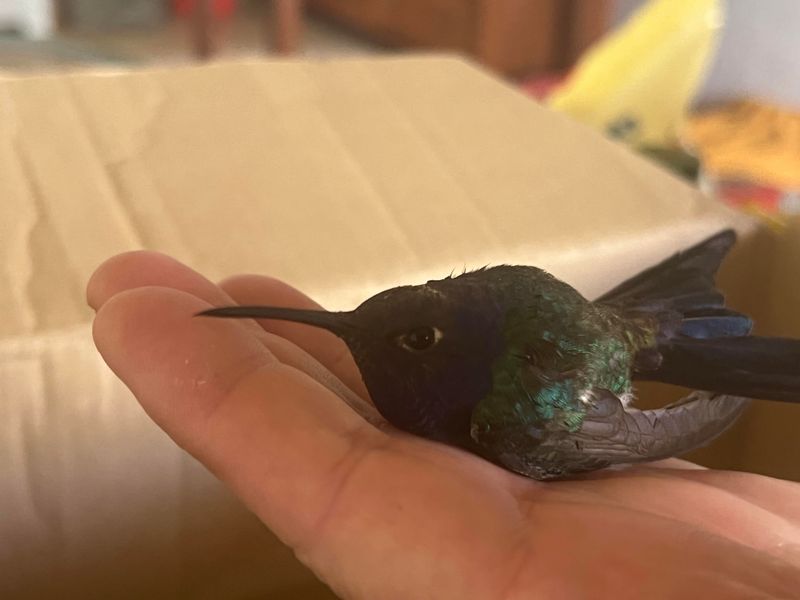
Handling a hummingbird requires butterfly-gentle touches. Their bones are thinner than toothpicks and incredibly fragile. Instead of grabbing the bird, slide a small cloth, tissue, or even a leaf underneath it.
Cup your hands around – not on – the hummingbird to prevent escape without applying pressure. Never hold a hummingbird by its wings or tail feathers, which can cause permanent damage. Their necks are also extremely delicate, so avoid any pressure there.
If you need to transport the bird to a recovery box, move smoothly without jerky motions. Hummingbirds weigh less than a penny, and their bodies feel almost weightless – a reminder of how carefully they must be handled.
7. Keep Pets Away To Avoid More Stress
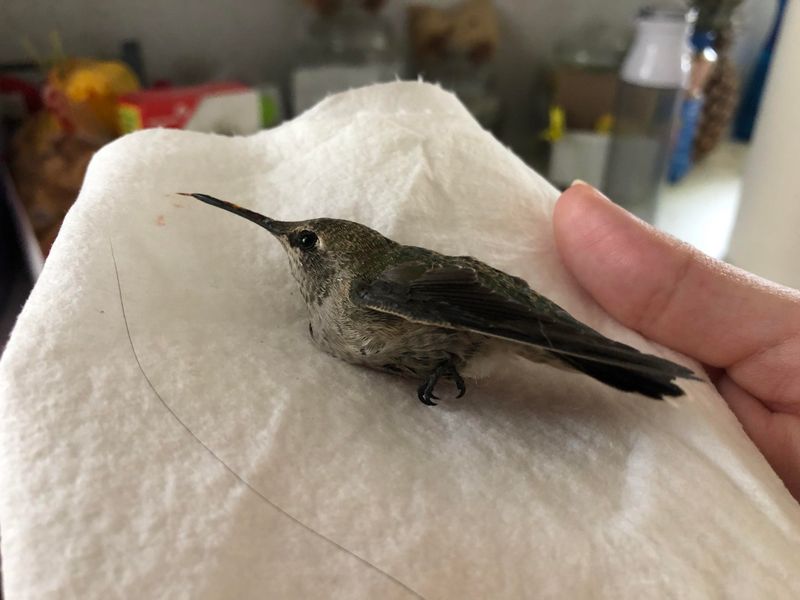
Your curious cat or enthusiastic dog can turn a bad situation worse for a grounded hummingbird. Even if your pets mean no harm, their presence alone can cause the tiny bird’s heart to race dangerously fast from fear.
Place indoor pets in another room completely. For outdoor rescues, have someone keep pets inside while you help the hummingbird. The bird can smell predators nearby, even if it can’t see them.
If a cat has already caught or touched the hummingbird, immediate professional help is necessary. Cat saliva contains bacteria that are almost always fatal to birds without antibiotic treatment, even from the smallest scratch or puncture.
8. Never Feed A Grounded Hummingbird Solid Food!
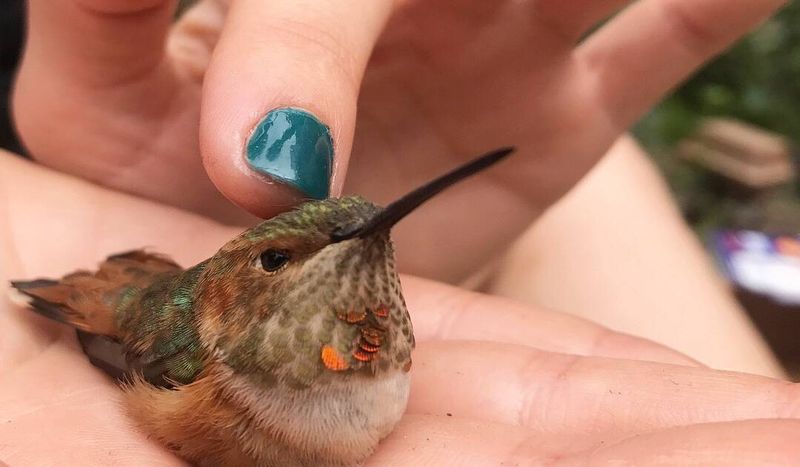
A common mistake with devastating consequences is offering solid food to a hummingbird. Their specialized diet consists almost entirely of nectar and tiny insects – not seeds, fruits, bread, or other foods we might think are helpful.
A hummingbird’s long, thin bill and tube-like tongue are designed specifically for sipping nectar, not eating solids. Forcing inappropriate food can cause choking, digestive blockages, or nutritional problems that worsen their condition.
Stick exclusively to sugar water (1 part white sugar to 4 parts water) as emergency nutrition. This mimics flower nectar and provides the quick energy they need without risking harm to their delicate digestive systems.
9. Set Up A Temporary Shelter For The Hummingbird
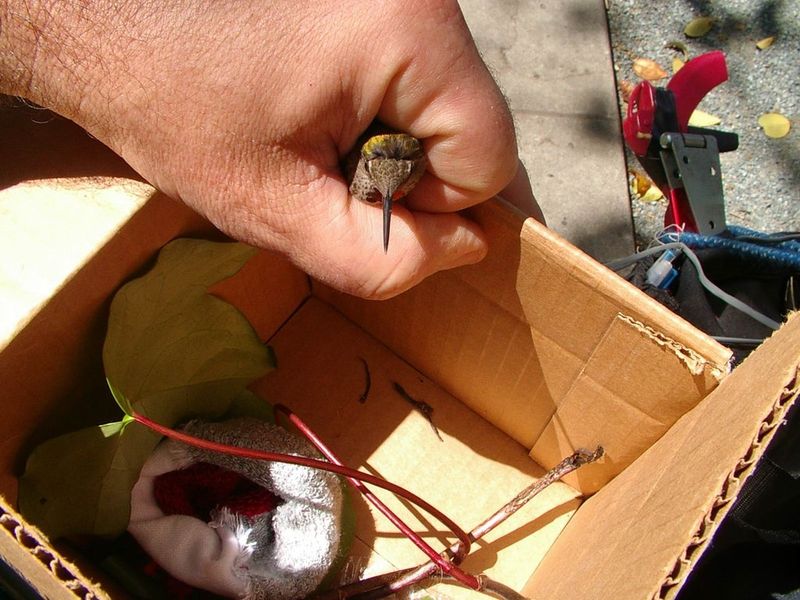
A shoebox might seem like the perfect rescue container, but it’s actually too large for a tiny hummingbird. Choose a smaller box where the bird won’t waste energy moving around too much. A clean, small cardboard box or container works perfectly.
Line it with soft, clean paper towels or a cloth without loose threads that could entangle their delicate feet. Avoid using cotton balls or similar materials that might stick to the bird or be ingested accidentally.
Place the sugar water solution in a bottle cap inside the container. Keep the box in a warm (70-80°F), quiet place away from air conditioning vents or drafts that could chill the hummingbird.
10. Don’t Try To Fix Injuries Without Expert Help
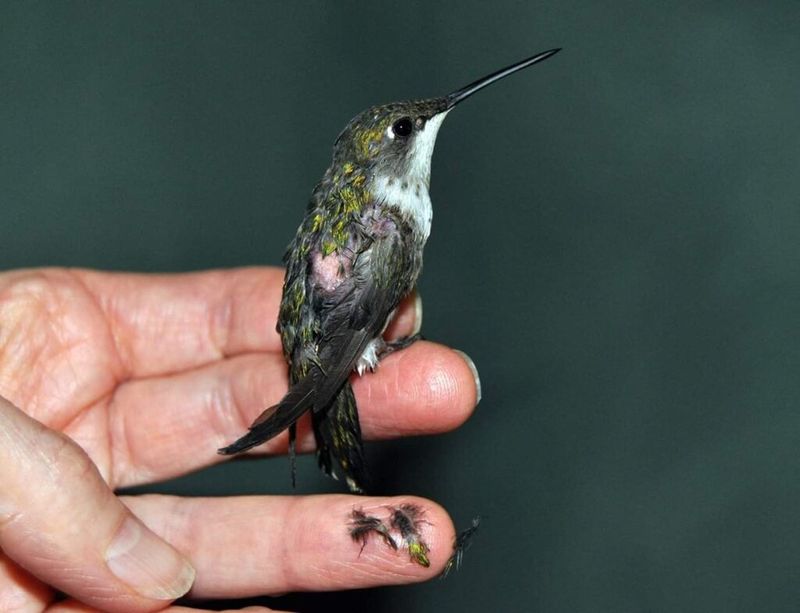
Those tiny, iridescent wings might look simple, but they’re engineering marvels with complex bone structures. Amateur attempts to splint wings, clean wounds, or set fractures almost always cause more harm than good.
What looks like a minor injury to us can be life-threatening for a creature weighing less than a nickel. Household antiseptics, adhesives, and bandages contain chemicals toxic to birds and can damage their ultra-thin skin and feathers.
Focus on providing a safe, stress-free environment while arranging professional help. Take clear photos of visible injuries to share with rescuers, which helps them prepare appropriate treatment before the bird arrives.
11. Limit Handling To Let The Hummingbird Recover
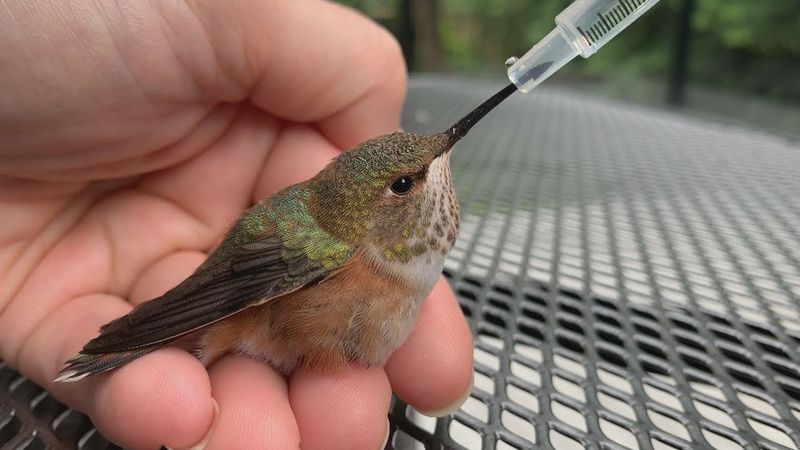
Every moment a hummingbird spends being handled burns precious calories they can’t afford to lose. These tiny birds have the fastest metabolism of any animal except insects – their hearts can beat over 1,200 times per minute when stressed!
After the initial rescue, minimize handling completely. Resist the urge to check on them frequently or show them to family members. Even the gentlest touch causes stress that depletes their limited energy reserves.
If you must check on the bird, do so visually through air holes or by carefully lifting just a corner of the covering. Remember that what feels like a gentle touch to us can feel like a crushing weight to a creature that weighs as little as a penny.
12. When To Release The Hummingbird Back Outdoors?
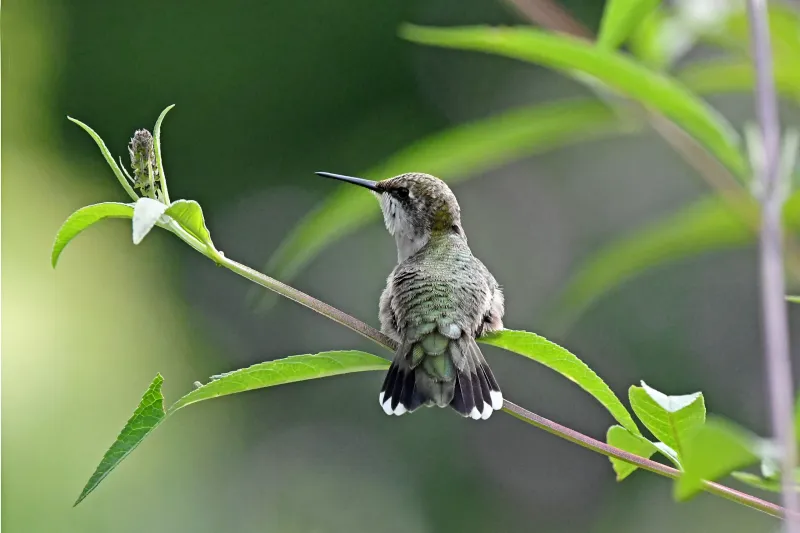
Morning is the ideal release time for a recovered hummingbird. Early daylight hours give them maximum time to find food sources and shelter before nightfall. Never release a hummingbird at night when temperatures drop and predators are most active.
Look for clear signs of recovery first: alert behavior, normal posture, and active movement. A healthy hummingbird will appear energetic and eager to leave when the box is opened in a safe outdoor location.
Choose a release spot near flowering plants or hummingbird feeders, but away from windows, roads, and potential predators. Simply open the container and step back – don’t throw or launch the bird into the air, as they’ll take flight when ready.
13. Providing The Right Environment For Recovery
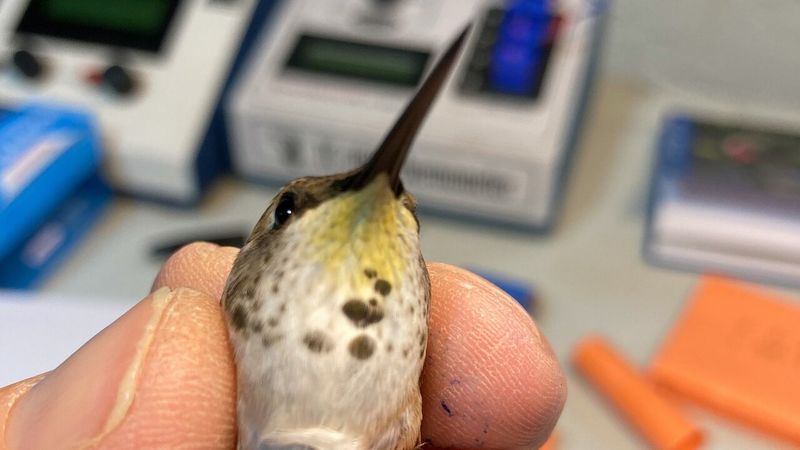
Temperature control can make or break a hummingbird’s recovery. These tiny birds maintain body temperatures around 105°F (40°C) – significantly higher than humans. A chilled hummingbird can’t digest food or maintain vital functions.
If the bird feels cool to the touch, warm the recovery space gradually. Place a heating pad set on LOW under half of the container (never the entire bottom) so the bird can move to a cooler area if needed. Alternatively, use a warm water bottle wrapped in a towel.
Keep humidity moderate – too dry, and the bird may become dehydrated; too humid, and feathers can’t function properly. Maintain a quiet environment, as loud noises or vibrations create stress that burns critical energy.
14. Why You Should Check Before Assuming The Hummingbird Passed Away?
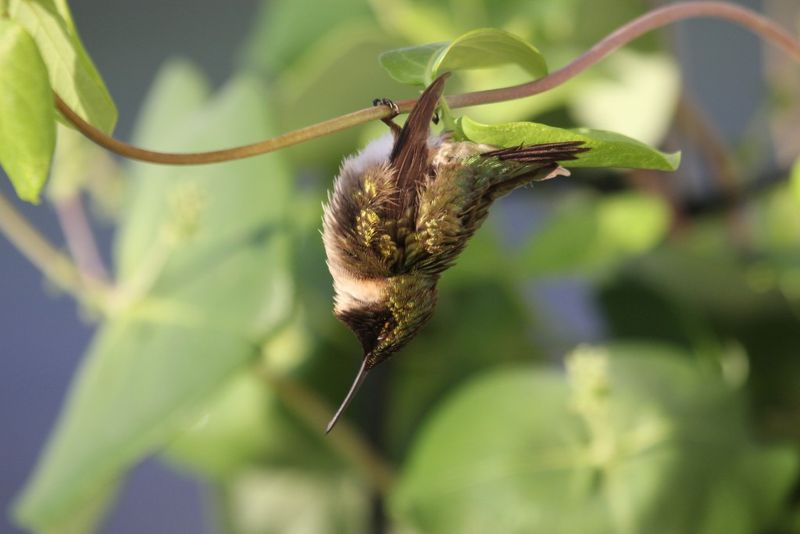
Hummingbirds have a remarkable survival technique that often fools people into thinking they’ve died. When food is scarce or temperatures drop, they enter a state called torpor – a temporary hibernation where their heartbeat and breathing slow dramatically to conserve energy.
A hummingbird in torpor appears completely lifeless. Its body temperature can drop from 105°F to near ambient temperature, and its breathing becomes nearly undetectable. This amazing adaptation helps them survive cold nights and food shortages.
Before declaring a seemingly dead hummingbird beyond help, place it in a warm, quiet container with sugar water nearby. Allow several hours for revival – many “dead” hummingbirds have stunned rescuers by suddenly springing back to life once warmed!
15. What To Do If You Find A Baby Hummingbird?
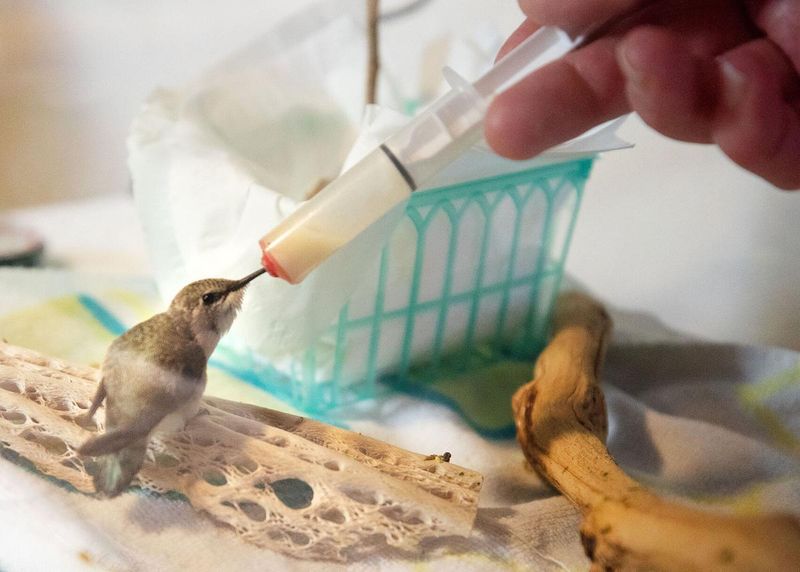
Baby hummingbirds are among the tiniest of all baby birds – truly miniature marvels smaller than jelly beans. They’re easily identified by their short bills (adult bills are proportionally much longer) and yellow mouth edges that guide the mother’s bill during feeding.
If you find a nest with babies, leave them there! Mother hummingbirds frequently leave to gather food and return throughout the day. A baby on the ground, however, needs immediate help from a wildlife rehabilitator who specializes in hummingbirds.
While waiting for expert help, keep the baby warm in a small container lined with tissues. Don’t attempt to feed it – baby hummingbirds need specialized protein mixtures, not just sugar water, and have specific feeding techniques to prevent drowning.


